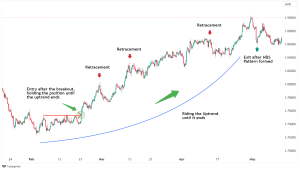Fundamental Analysis: How to Analyze a Company’s Financial Health and Economic Factors for Informed Trading Decisions
Introduction
In the trading world, making informed decisions is key to long-term success. While technical analysis focuses on price patterns and market trends, fundamental analysis digs deeper into the financial health and economic factors influencing a company’s stock price. By understanding the fundamentals, traders can make more accurate predictions and better investment choices. In this post, we’ll explore the essential components of fundamental analysis and how you can use them to enhance your trading strategy.
1. Understanding Fundamental Analysis
Fundamental analysis is the method of evaluating a security by analyzing the financial data of a company and the broader economic environment. The goal is to determine the intrinsic value of the stock, which can then be compared to its current market price to identify potential buying or selling opportunities.
2. Key Components of Fundamental Analysis
To perform a thorough fundamental analysis, traders need to consider several key factors:
- Company Financial Statements: These are the backbone of fundamental analysis. The three primary financial statements are:
- Income Statement: Shows the company’s revenue, expenses, and profits over a specific period. Key metrics to watch include revenue growth, profit margins, and net income.
- Balance Sheet: Provides a snapshot of the company’s assets, liabilities, and shareholder equity at a specific point in time. Important indicators include the debt-to-equity ratio, current ratio, and return on equity (ROE).
- Cash Flow Statement: Tracks the cash inflows and outflows from operating, investing, and financing activities. It’s essential to assess the company’s cash flow to ensure it can sustain operations and growth.
- Earnings Reports: Quarterly earnings reports give insights into a company’s recent performance and future outlook. Key figures to analyze include earnings per share (EPS), revenue growth, and guidance for future quarters.
- Management and Leadership: A company’s management team plays a crucial role in its success. Assess the experience, track record, and vision of the leadership team. Are they capable of steering the company through challenges and driving growth?
- Industry and Market Conditions: Understanding the broader industry and market in which the company operates is vital. Analyze industry trends, competition, market share, and regulatory environment to gauge the company’s potential for growth.
- Economic Indicators: Broader economic factors can impact a company’s performance. Keep an eye on indicators such as interest rates, inflation, GDP growth, and employment rates. A strong economy typically supports business growth, while economic downturns can negatively affect company earnings.
3. Valuation Methods
Fundamental analysis involves various valuation methods to estimate a company’s intrinsic value. Here are some popular techniques:
- Price-to-Earnings (P/E) Ratio: This ratio compares a company’s current stock price to its earnings per share (EPS). A lower P/E ratio may indicate that the stock is undervalued, while a higher P/E ratio could suggest overvaluation.
- Price-to-Book (P/B) Ratio: The P/B ratio compares a company’s market value to its book value (total assets minus total liabilities). It helps determine if the stock is trading at a fair value relative to its actual worth.
- Discounted Cash Flow (DCF) Analysis: The DCF model estimates the present value of a company’s future cash flows, discounted back to today’s value. This method requires making assumptions about future cash flows, growth rates, and discount rates, making it more complex but highly effective.
- Dividend Discount Model (DDM): This model values a stock based on the present value of its expected future dividends. It’s particularly useful for companies with a strong history of dividend payments.
4. How to Use Fundamental Analysis in Trading
Integrating fundamental analysis into your trading strategy can provide a solid foundation for making informed decisions:
- Long-Term Investing: Fundamental analysis is especially valuable for long-term investors who seek to buy and hold stocks for extended periods. By identifying undervalued stocks with strong fundamentals, you can capitalize on potential growth over time.
- Combining with Technical Analysis: Many traders use a combination of fundamental and technical analysis to enhance their decision-making. For instance, you might use technical analysis to time your entry and exit points while relying on fundamental analysis to select which stocks to trade.
- Assessing Risk: Fundamental analysis helps assess the financial health of a company, allowing you to identify potential risks and avoid investing in companies with weak fundamentals or uncertain futures.
5. Limitations of Fundamental Analysis
While fundamental analysis is a powerful tool, it’s essential to understand its limitations:
- Time-Consuming: Thorough fundamental analysis requires a significant amount of research and analysis, which can be time-consuming.
- Subjectivity: Some aspects of fundamental analysis, such as management evaluation and economic forecasting, involve subjective judgment, which can lead to differing opinions among analysts.
- Market Behavior: Stock prices don’t always move in line with fundamental values due to market sentiment, news, and other external factors. This means that even if a stock is undervalued, it might not immediately rise in price.
Conclusion
Fundamental analysis is a crucial component of successful trading, offering deep insights into a company’s financial health and the broader economic landscape. By mastering this approach, you can make more informed and confident trading decisions, whether you’re investing for the long term or looking for short-term opportunities. Remember to combine fundamental analysis with other trading strategies and stay updated on market conditions to enhance your trading performance.











Post Comment